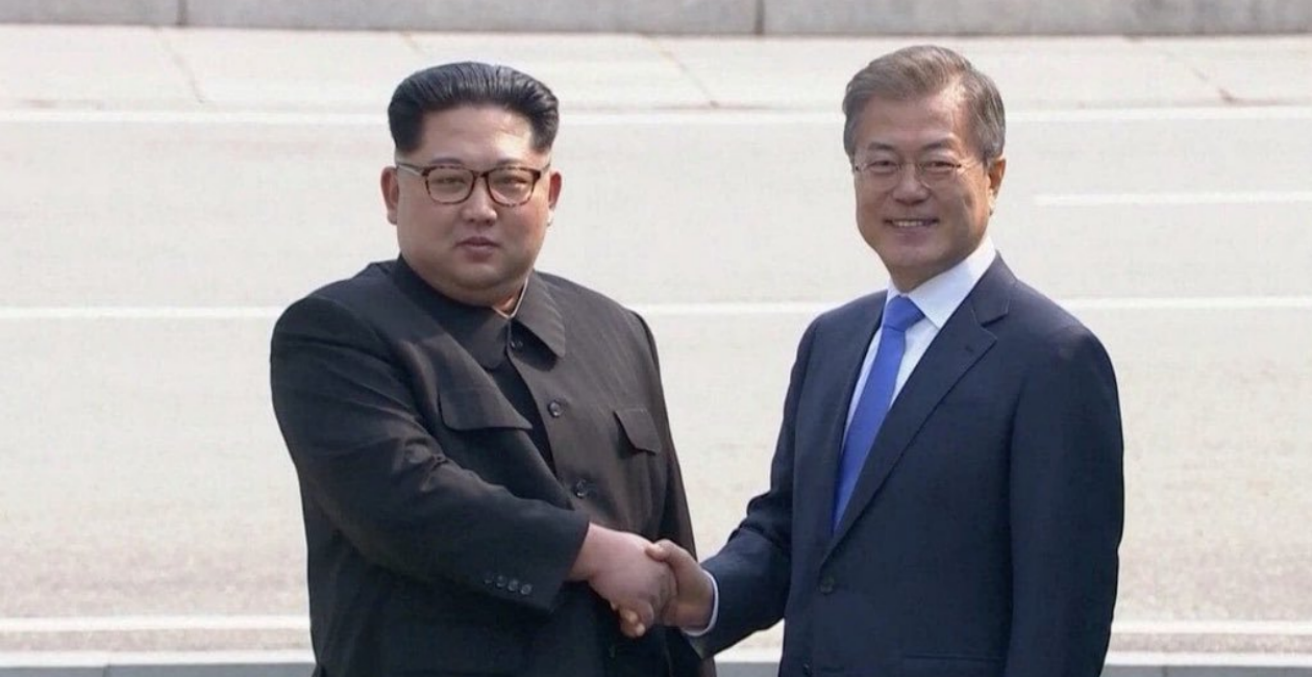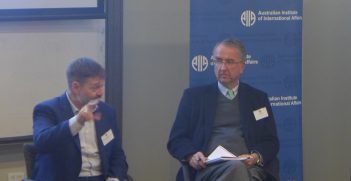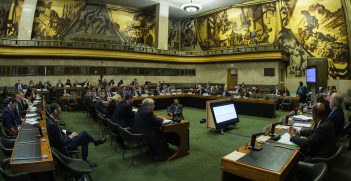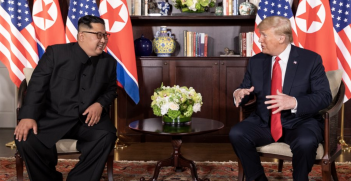North Korea: Inspectors at the Door?

Despite uncertainties about how, when and under what conditions, the International Atomic Energy Agency is preparing to return to North Korea.
In September 2018, while the leaders of North and South Korea met for another spectacular summit in the North Korean capital Pyongyang, the 170 members of the International Atomic Energy Agency (IAEA) were meeting in Vienna at their annual General Conference to promote the peaceful uses of nuclear energy while verifying that nuclear materials are not diverted to bombs. The North Korean situation was a major item on the agenda.
The Pyongyang Summit has re-energised efforts to address nuclear issues in North East Asia. In a joint press conference in Pyongyang, President Moon Jae-In announced “a set of concrete measures to denuclearize the peninsula.” The US State Department welcomed the summit, looking ahead to international inspection: “Having IAEA inspectors and United States inspectors be a part of anything is really just a shared understanding. Anytime you have a nuclear situation like this, where there is a dismantlement, the expectation is that IAEA inspectors would be a part of that.”
In Vienna, a message to the General Conference from President Trump, delivered by Energy Secretary Rick Perry, confidently reported that “Chairman Kim has reaffirmed his commitment to complete denuclearization of the Korean Peninsula… The United States appreciates the IAEA’s readiness to contribute to our efforts to promote peace and the security of both the Korean Peninsula and the world.”
IAEA Director General Yukiya Amano’s report to the Conference explained that the Secretariat continued to “enhance its readiness to play an essential role” once “political agreement is reached amongst countries concerned.” However it underlined that the IAEA’s ability to assess developments in North Korea had been seriously weakened by not having access to facilities on the ground. The key finding of its monitoring activity over the past year was that the North Korean nuclear program had continued to develop and was the cause of “grave concern”, a finding at odds with optimistic White House statements, but reportedly not with US intelligence assessments.
Comparing Iran with North Korea
In Iran, the IAEA has demonstrated its ability to respond to new demands, and it is confident it can do the same if called upon to return to North Korea. But it will be a major challenge. The inspection effort in Iran is consuming some 80 staff. Given the complexity of North Korean nuclear activity and the lack of continuous monitoring, the resources required could be two or three times greater. Relevant nuclear expertise is not abundant, and training will be required.
As with Iran, the North Korean project would probably rely, at least initially, on extra-budget donations. It will be helpful for the countries of the Asia-Pacific, including Australia, to contribute generously in cash or kind to keep the project genuinely multinational in character and to demonstrate broad regional support for a peaceful settlement.
Within the IAEA, the diversion of senior experienced inspectors to the high-profile work in Iran and North Korea has morale implications and ultimately results in lower levels of assurance provided by ongoing inspections in the other 180-odd countries subject to IAEA verification. Also, there is resistance – especially amongst G-77 countries – to increasing the budget for verification without parallel increases in the IAEA’s promotional activities.
But there are also promising signs. Major budget contributors seem willing to allow the IAEA budget to grow to cater for what is clearly an invaluable contribution to global nuclear non-proliferation efforts. The Secretariat has been deploying its best team to plan and prepare for a return to North Korea.
The Japan factor
Japan has a vital stake in the unfolding situation on the Korean Peninsula, but to date has little to no direct role in the negotiations, apart from recently-reported back-channel exchanges in Mongolia between North Korean and Japanese intelligence officials. As IAEA Director General Amano is a former Japanese diplomat, it should provide Japan with a measure of satisfaction that one of its nationals will play a pivotal role. But equally he will need to remain visibly aloof from the parties to any settlement. His first source of external support will be the Security Council, not Tokyo.
In keeping with his approach to Iran, Amano is structuring the Korean inspection team as an independent unit within the Secretariat. This approach has its critics – both internal and external – but will allow for the closest high-level control which will be needed should the IAEA return to North Korea. He has also appointed a senior adviser in his office, a former Japanese official with extensive experience in North Korean negotiations.
Washington on the move
Washington seems to be increasing its preparedness. While the US mission to the UN in Vienna still lacks an Ambassador – Jackie Wolcott, a close associate of National Security Adviser John Bolton, was nominated to Congress in January but awaits confirmation – the appointment of Steve Biegun as Special Representative for North Korea is as important as it is belated.
For observers of the way Washington builds up its inter-agency machinery in response to major policy developments, the US delegation to the General Conference tells a story: the delegation grew from some 80 members in 2017 to 150 in 2018.
Many verification issues remain
Some form of international oversight of North Korea’s denuclearisation will be necessary, but there are many complexities to be resolved. A new mechanism could be mandated by key stakeholders through the Security Council, like the United Nations Special Commission to dismantle Iraq’s chemical and biological weapons. Key activities could be undertaken by existing mechanisms. But the IAEA’s mandate does not normally extend to weapons testing facilities, and no international organisation currently has a mandate for dismantling missile facilities. Because of proliferation sensitivities, any eventual nuclear weapon dismantling would probably be undertaken with direct or indirect oversight of one or more of the P-5 nuclear weapon states.
It would be for negotiation as to whether the US or any other major stakeholder would have direct engagement in inspection activity, separate from participation in the international inspection teams. A further potentially important element of transparency and assurance could be external involvement in modernising North Korea’s nuclear energy program to supply critically needed additional electricity to the North Korean grid.
But before getting to these soluble issues, the politics need to be settled. The season of summits has a long run ahead.
John Tilemann is the director of research for the Asia-Pacific Leadership Network on Nuclear Non-Proliferation and Disarmament. He is a former career diplomat and was chief of staff to IAEA directors-general Hans Blix and Mohamed ElBaradei.
This article is published under a Creative Commons Licence. It can be republished with permission.





